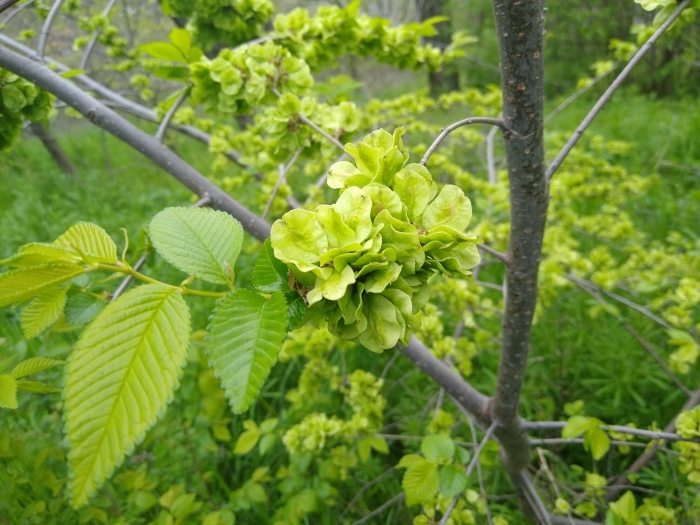English Elm
(Ulmus procera)
English Elm (Ulmus procera)
/
/

© Anna Petrosyan
CC BY 4.0
Image By:
© Anna Petrosyan
Recorded By:
Copyright:
CC BY 4.0
Copyright Notice:
Photo by: © Anna Petrosyan | License Type: CC BY 4.0 | License URL: http://creativecommons.org/licenses/by/4.0/ | Uploader: anna_petrosyan | Publisher: iNaturalist |

























Estimated Native Range
Summary
Ulmus procera, commonly known as English Elm, is a large, fast-growing deciduous tree that was once prevalent in hedgerows and open fields in central southern England. It can exceed 130 feet in height with a trunk diameter of up to 6.5 feet. The English Elm is native to a variety of habitats including woodlands, floodplains, and fields, often forming dominant stands in lowland areas. It has a broad, rounded canopy with dark green, almost orbicular leaves that flush a lighter green in April. The small, reddish-purple hermaphrodite flowers appear in early spring before the leaves, followed by nearly circular samaras. This species is a clone of the highly variable Ulmus minor and is believed to have been introduced to Britain by the Romans for training vines.
The English Elm is valued for its imposing stature and its ability to form dense hedges and screens. It is also historically significant for its association with traditional English landscapes. In cultivation, it requires full sun to part shade, and it thrives in well-drained soils but is adaptable to a range of soil types. It is important to note that the English Elm is susceptible to Dutch elm disease, which has drastically reduced its population. It is also known for producing numerous root suckers, which can be problematic in urban settings. Despite these challenges, the tree is still used for its wood and as a landscape feature in areas where Dutch elm disease is not prevalent.CC BY-SA 4.0
The English Elm is valued for its imposing stature and its ability to form dense hedges and screens. It is also historically significant for its association with traditional English landscapes. In cultivation, it requires full sun to part shade, and it thrives in well-drained soils but is adaptable to a range of soil types. It is important to note that the English Elm is susceptible to Dutch elm disease, which has drastically reduced its population. It is also known for producing numerous root suckers, which can be problematic in urban settings. Despite these challenges, the tree is still used for its wood and as a landscape feature in areas where Dutch elm disease is not prevalent.CC BY-SA 4.0
Plant Description
- Plant Type: Tree
- Height: 70-90 feet
- Width: 30-40 feet
- Growth Rate: Rapid, Moderate
- Flower Color: N/A
- Flowering Season: Spring, Winter
- Leaf Retention: Deciduous
Growth Requirements
- Sun: Full Sun
- Water: Medium
- Drainage: Slow
Common Uses
Erosion Control
Natural Habitat
Native to woodlands, floodplains, and fields, often forming dominant stands in lowland areas
Other Names
Common Names: European Elm , Common Elm
Scientific Names: , Ulmus procera,
GBIF Accepted Name: